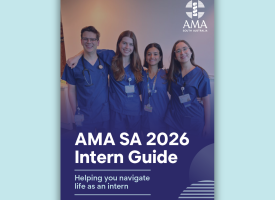Extra care needed to avoid vaccine wastage
The COVID19 vaccines will be incredibly precious, and it’s important to squeeze every dose out of the multi-dose vials, the AMA said this week.
The COVID19 vaccines will be incredibly precious, and it’s important to squeeze every dose out of the multi-dose vials, the AMA said this week.
Dr Khorshid said the World Health Organization estimated a wastage rate for vaccination doses of between 20 and 30 per cent in some places.
"That's already an unacceptably high number," Dr Khorshid told ABC Radio.
"It's really important that everything is done to minimise the wastage of these valuable vaccines."
Dr Moy was armed with props when he appeared on ABC TV to demonstrate the problems.
“They all come in a vial like this, and each one has to be diluted with a certain amount of saline, and after that you get a set number of doses,” he explained.
“So, each one, you have to put a needle in there, suck out a certain dose. Now, the dose is tiny – it’s about 0.3 of a mil each time. The problem with such a small dose is you can lose a tiny bit in the needle and also in the bottom of the syringe.”
Dr Moy said the Pfizer vaccine was designed with five doses in each vial, but it was possible to get six or even seven doses using special syringes and extra care.
Australia will initially be rolling out the Pfizer vaccine to prioritised quarantine workers, frontline staff and aged and disability workers and residents, while the AstraZeneca vaccine is yet to be formally approved for use in Australia.
Both vaccines must be used within six hours of opening.
The Government's new compulsory training for the vaccination workforce includes tutorials on using multi-dose vials, and for handling and storing vaccines.
Dr Moy said the rollout of both vaccines would require a level of coordination never before seen in Australia.
“Flu shots, you basically pull it out, put a needle on and you can give it to the individual,” he said.
“This is another level completely of skill and coordination, and we really would hope the Australian medical workforce can step up, because the community needs us to do this. The education is going to be important and we all need to join the fight on this.”



